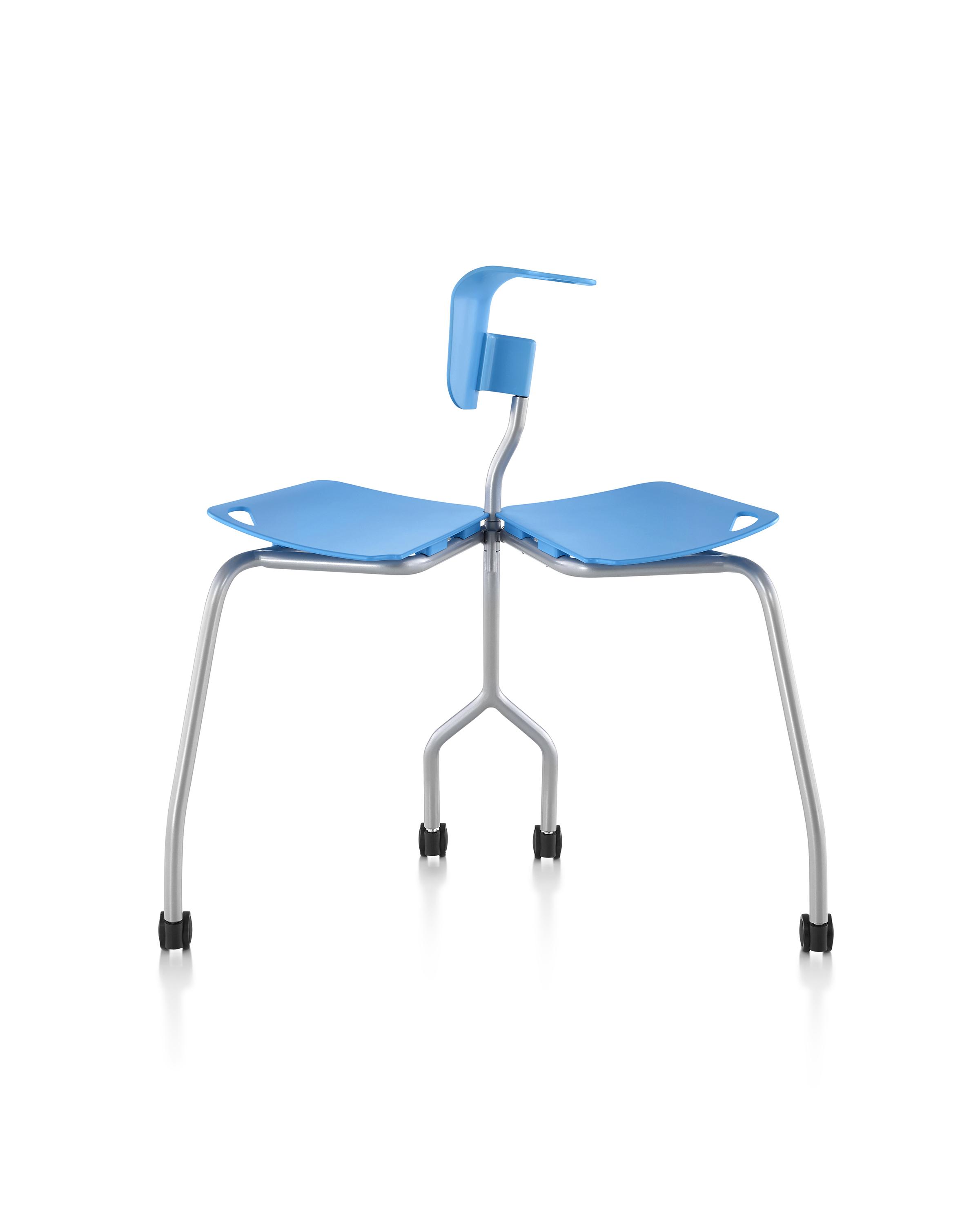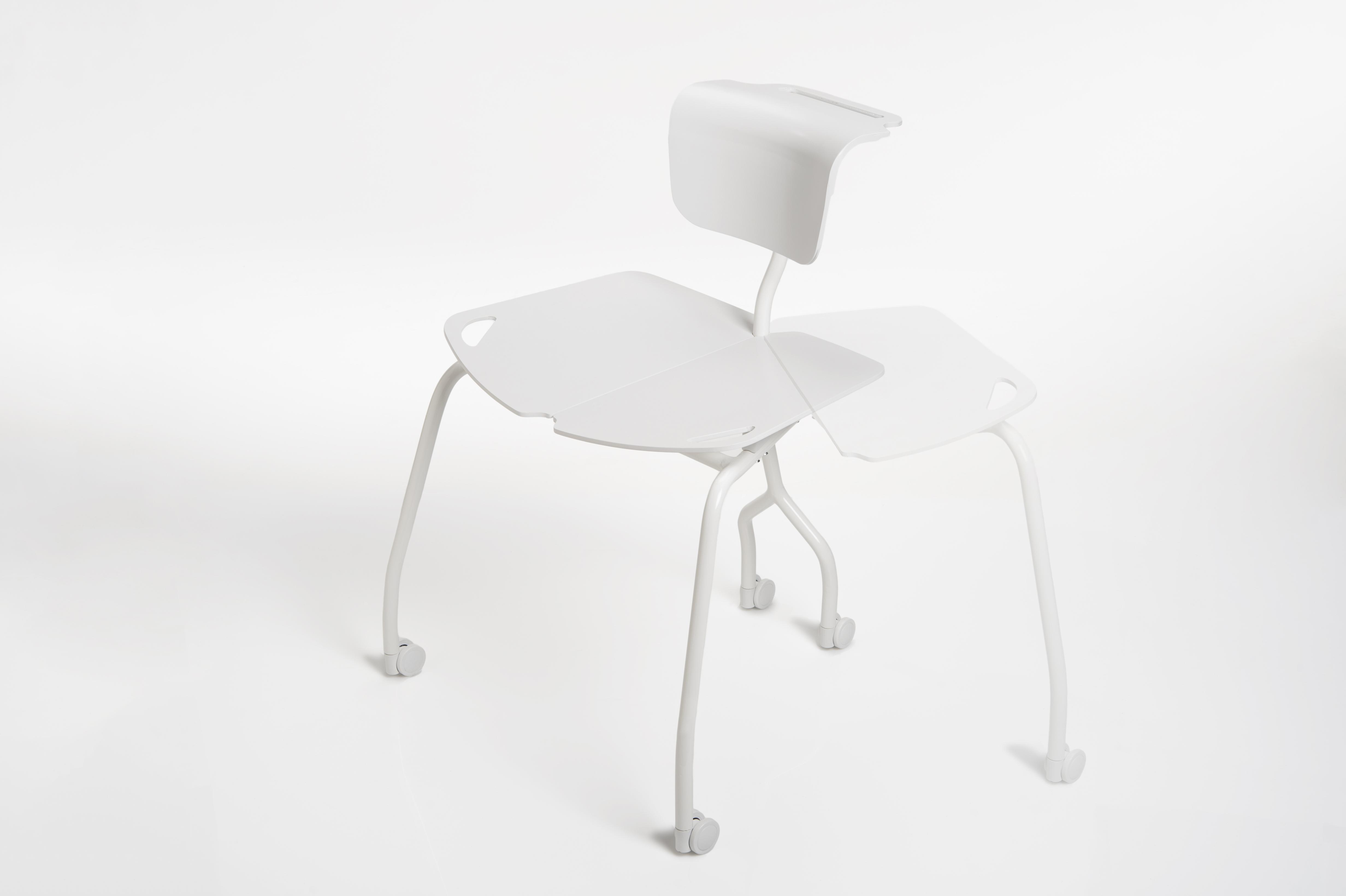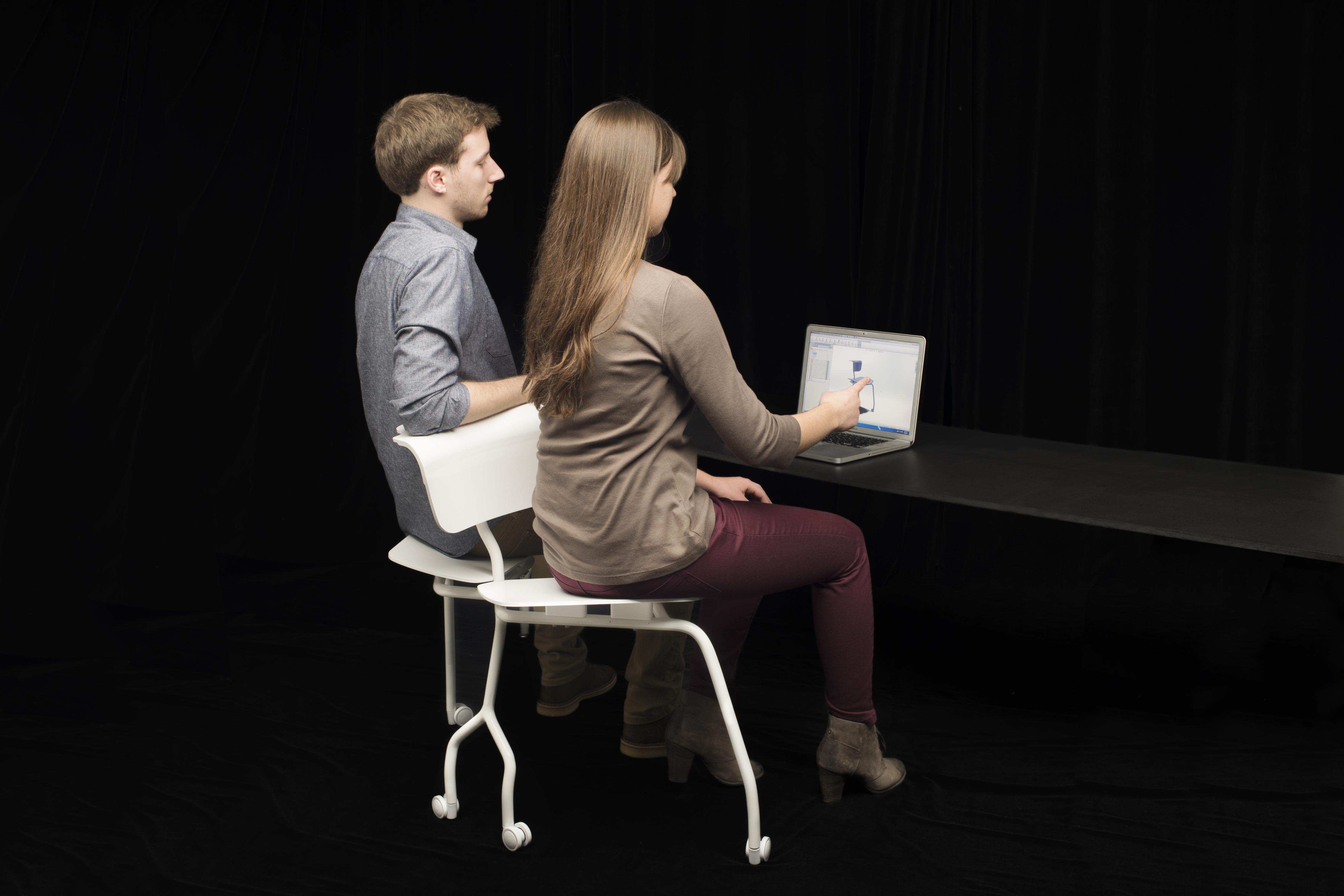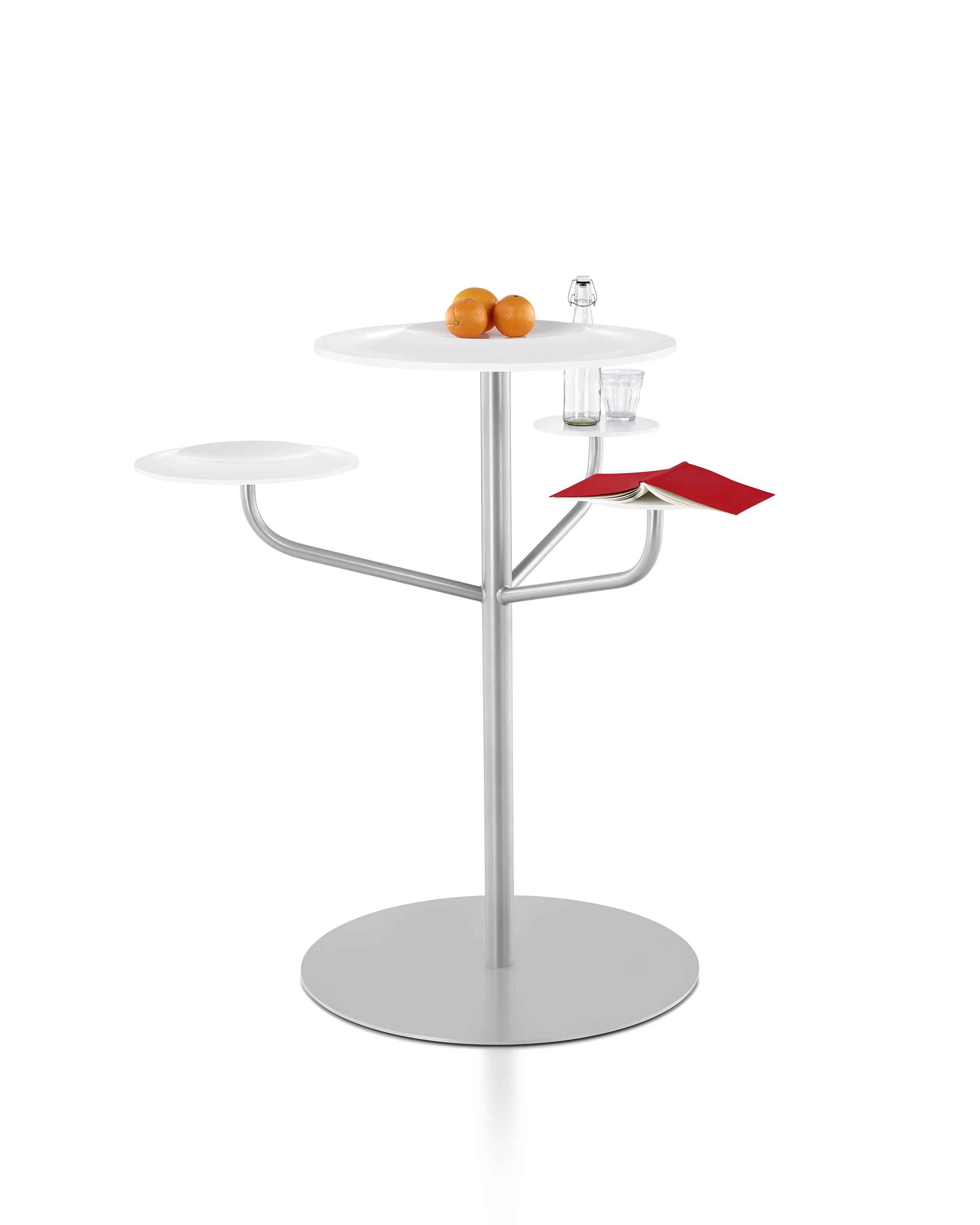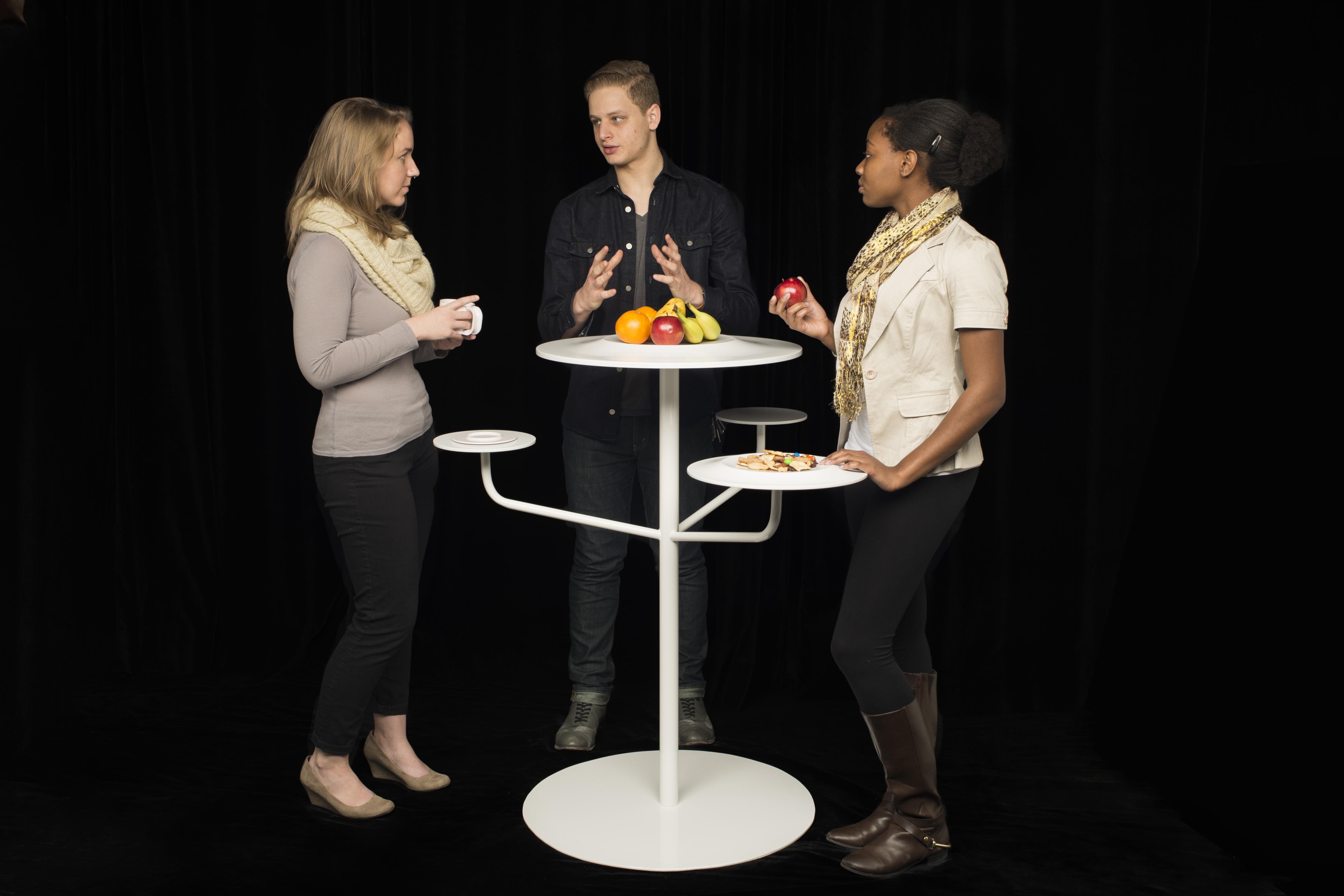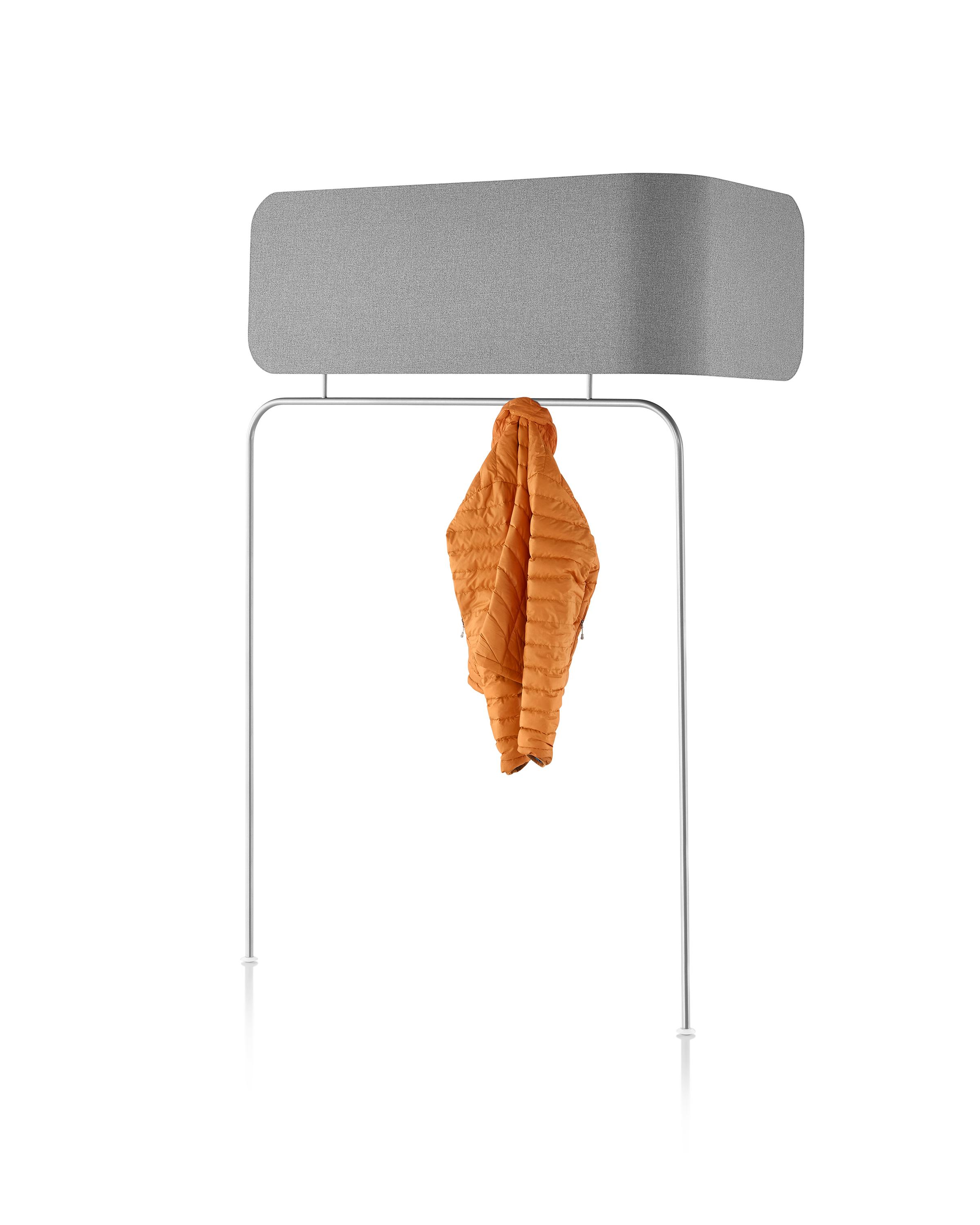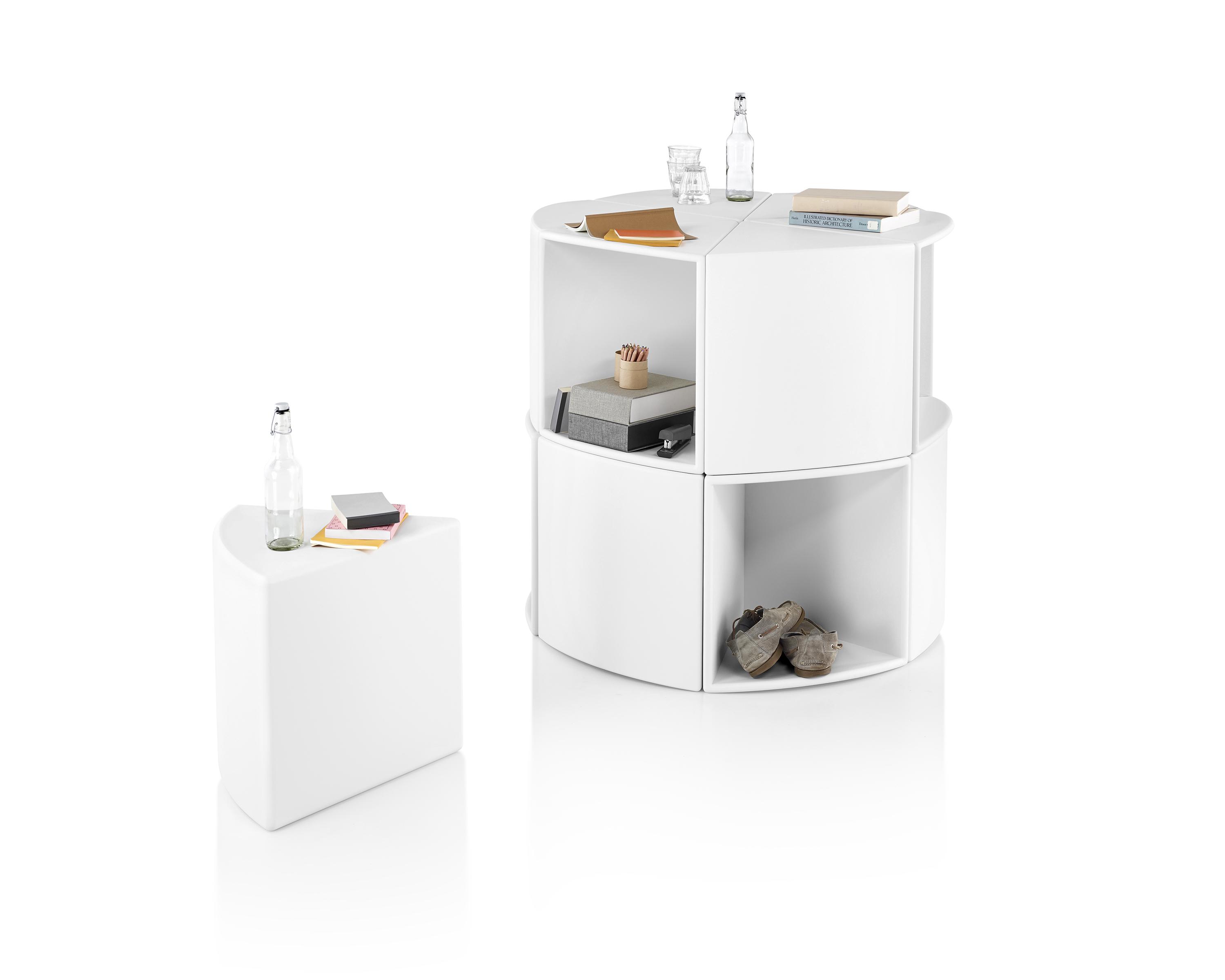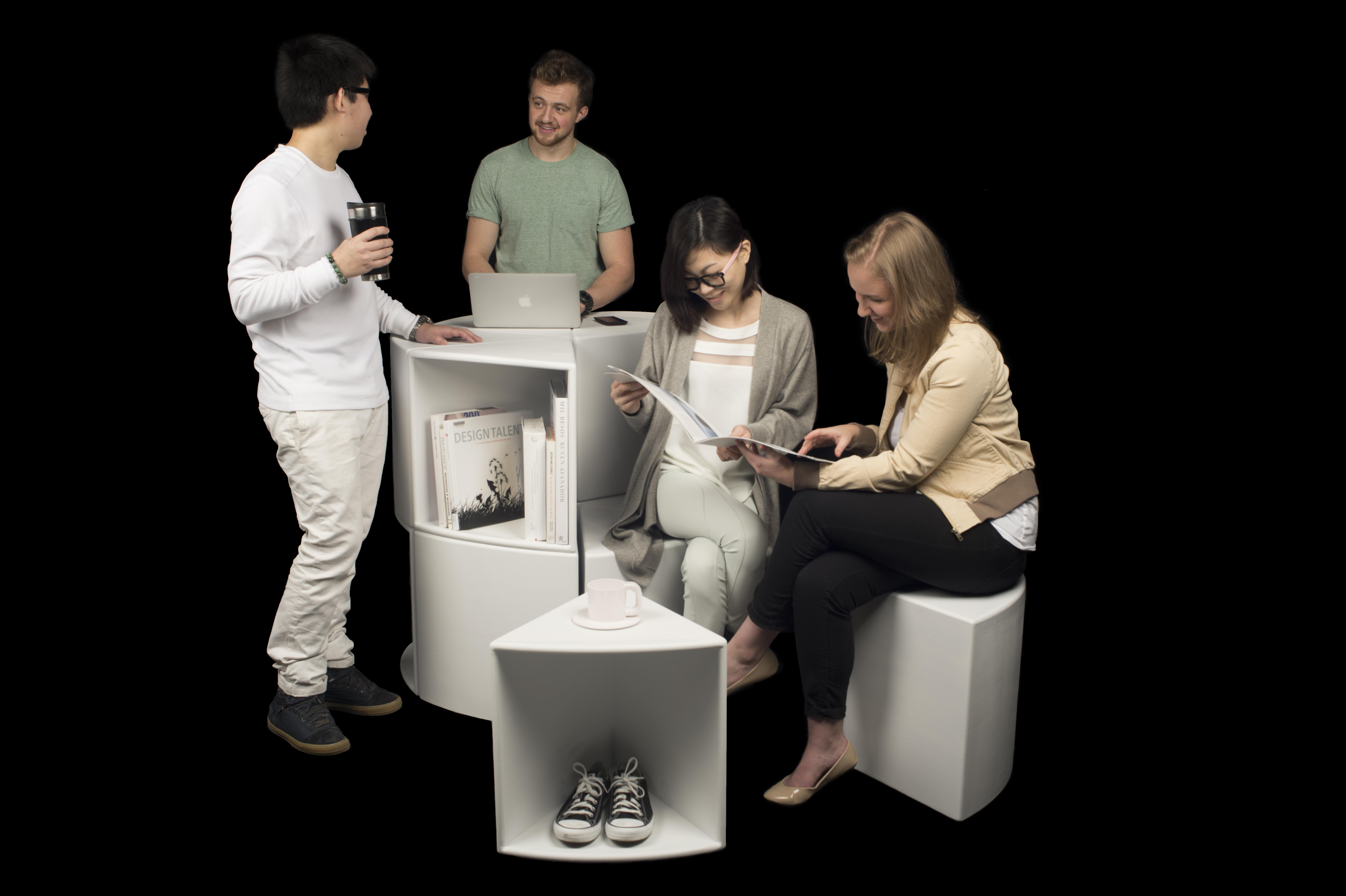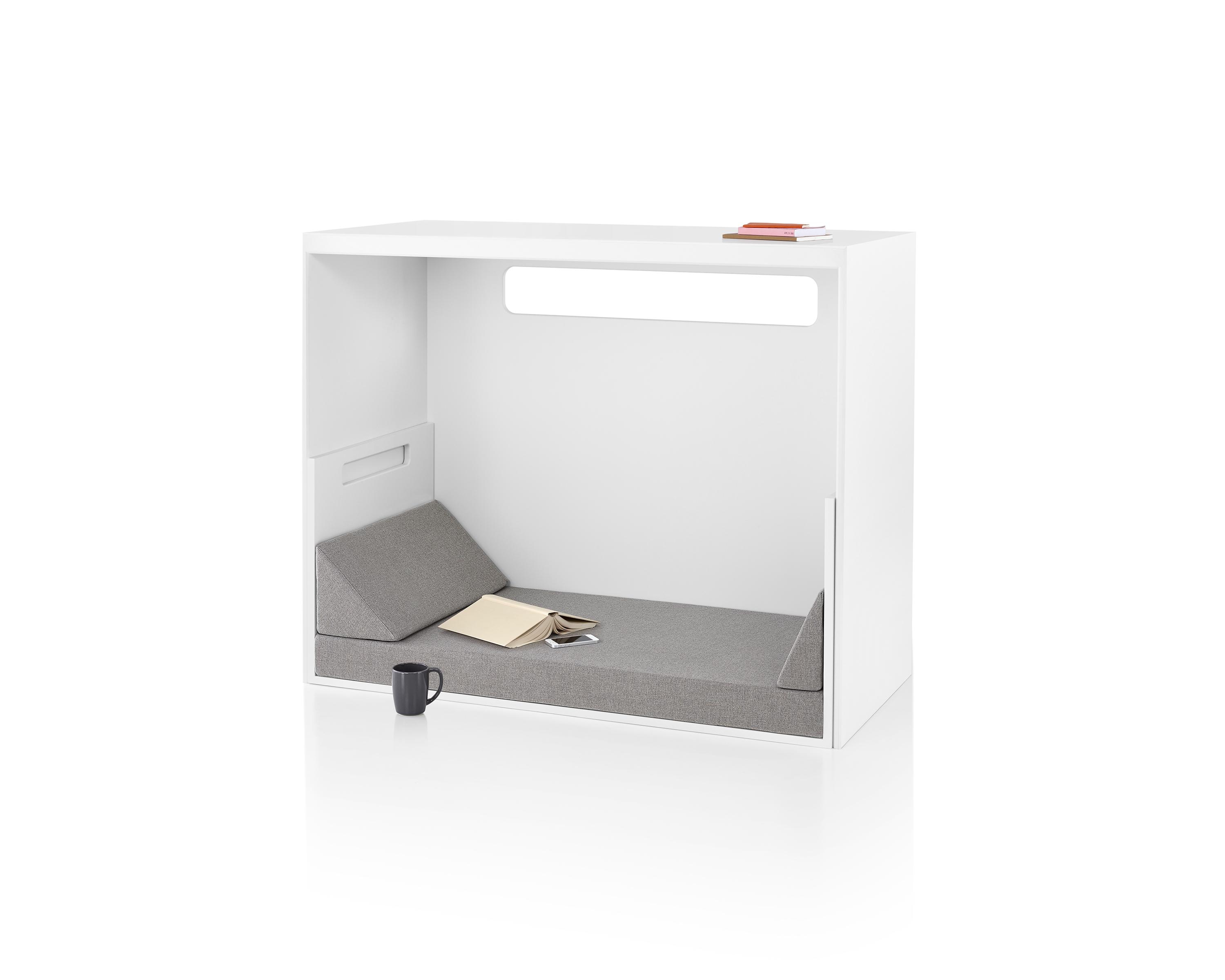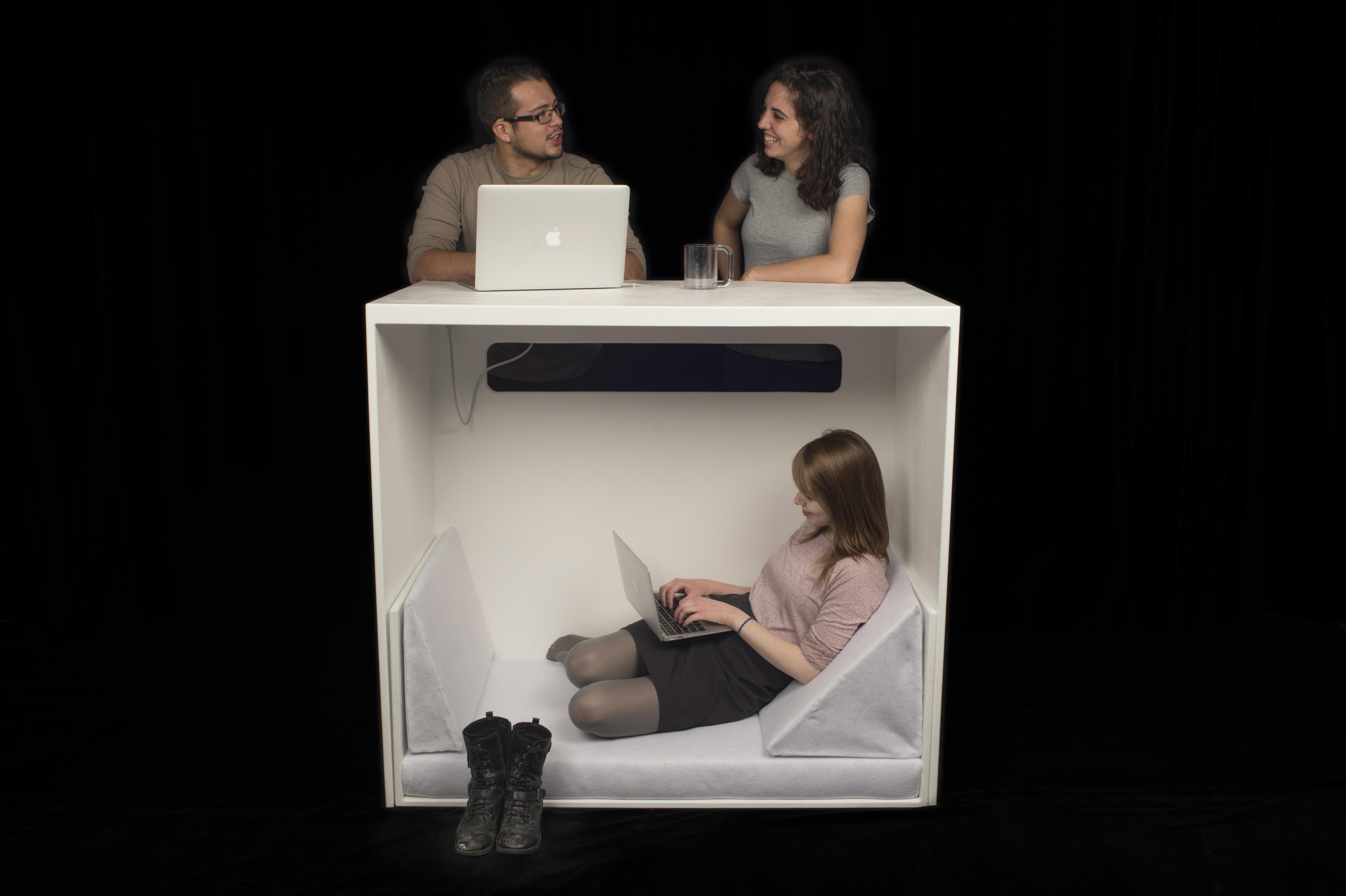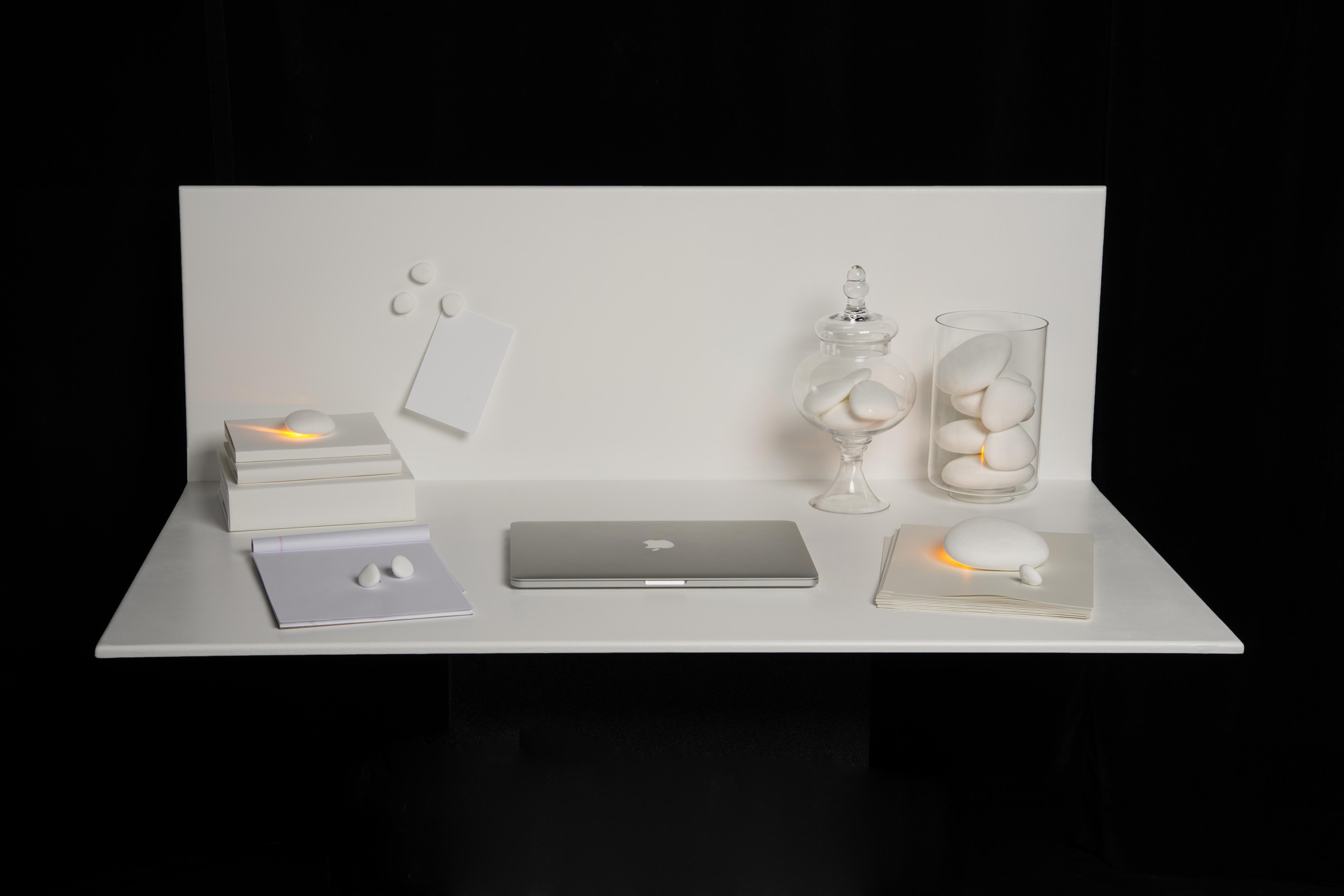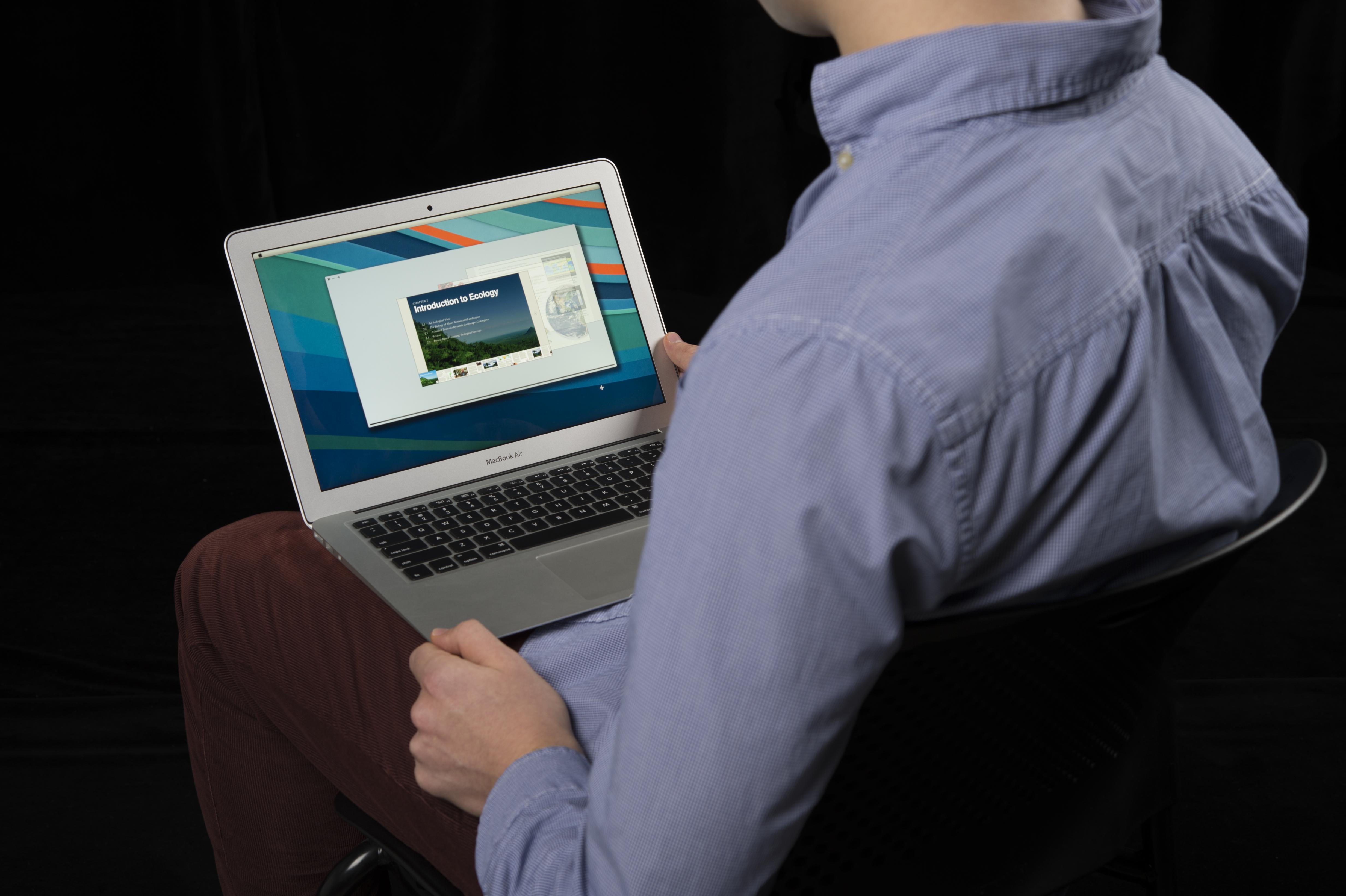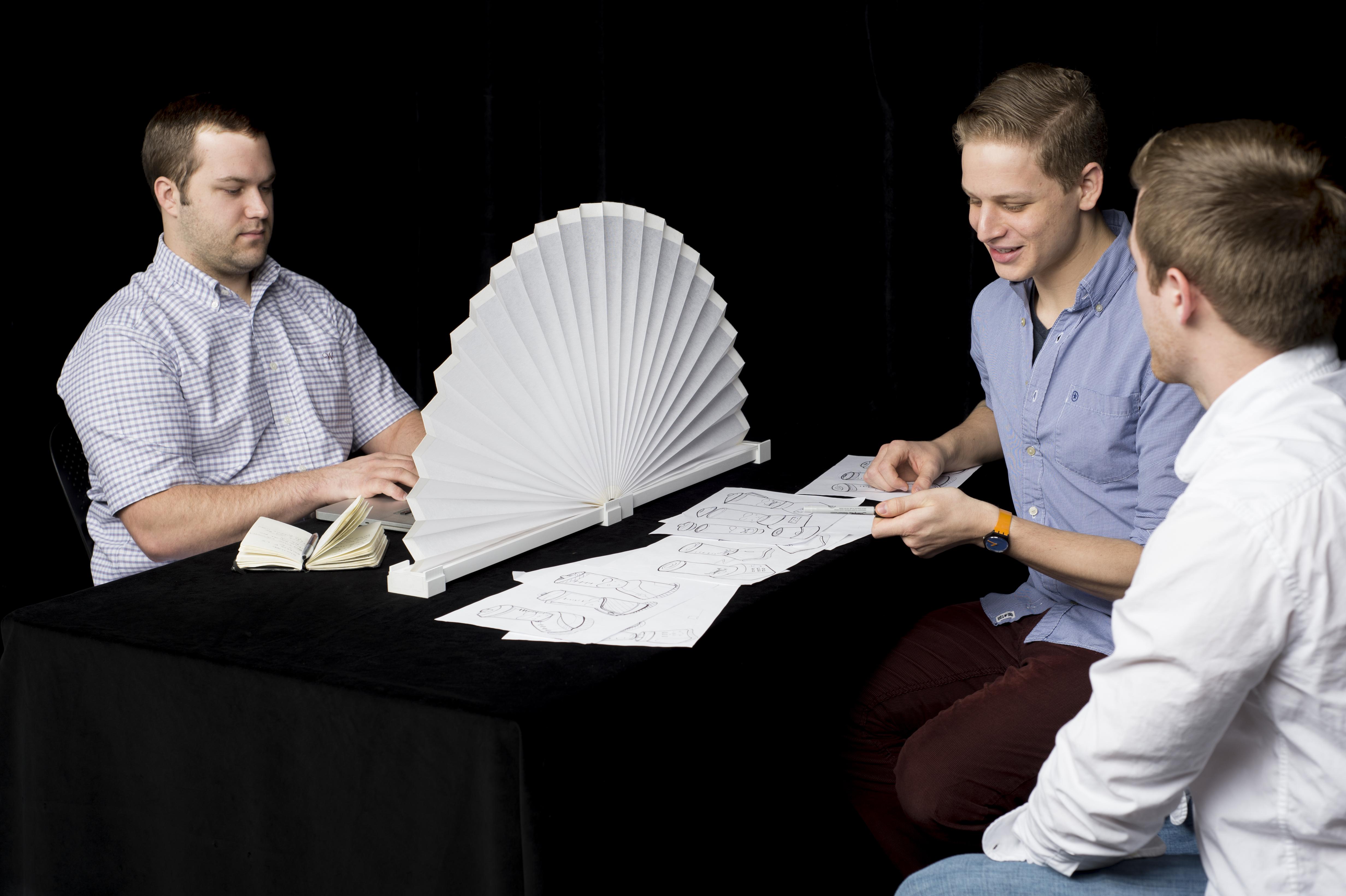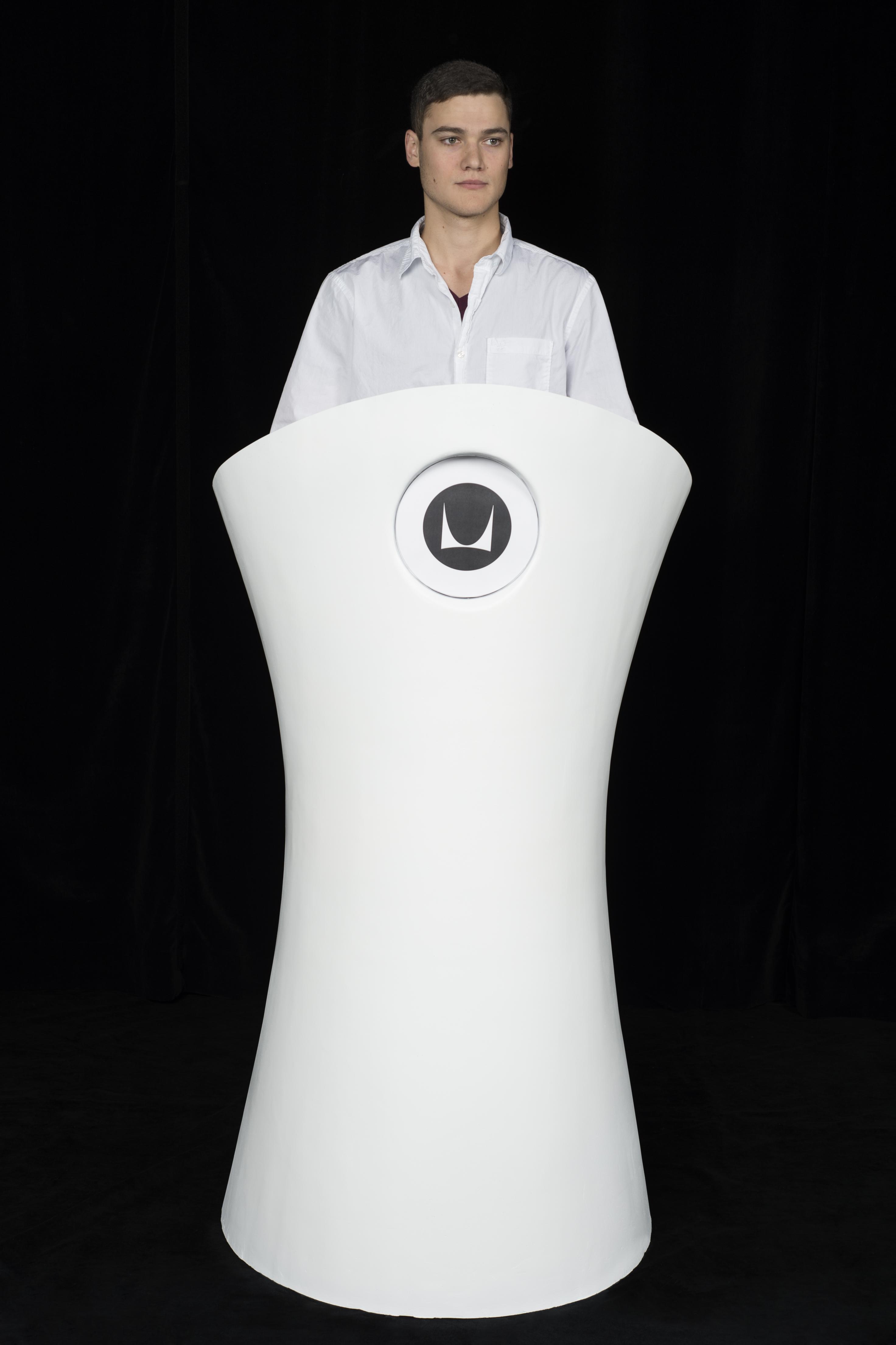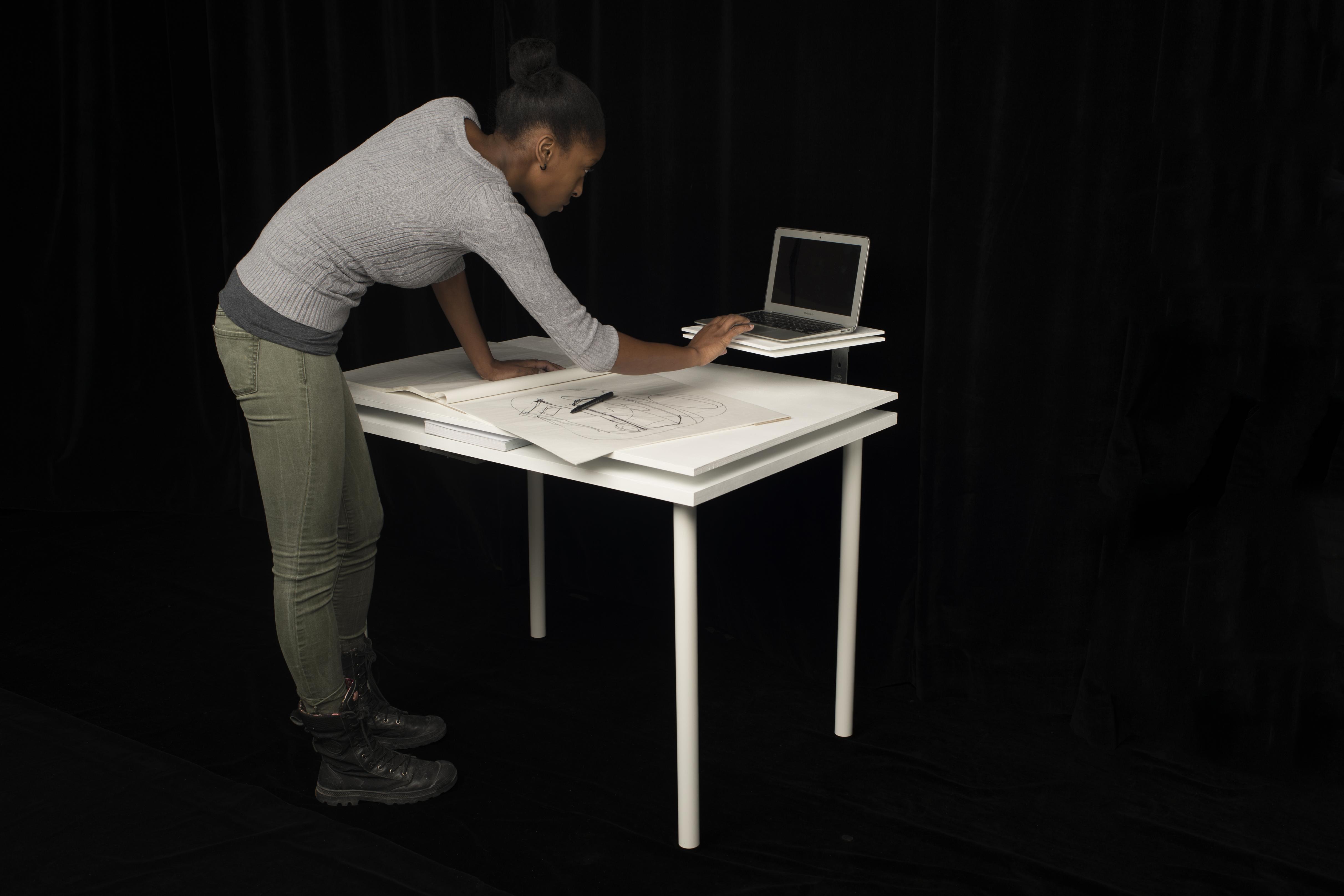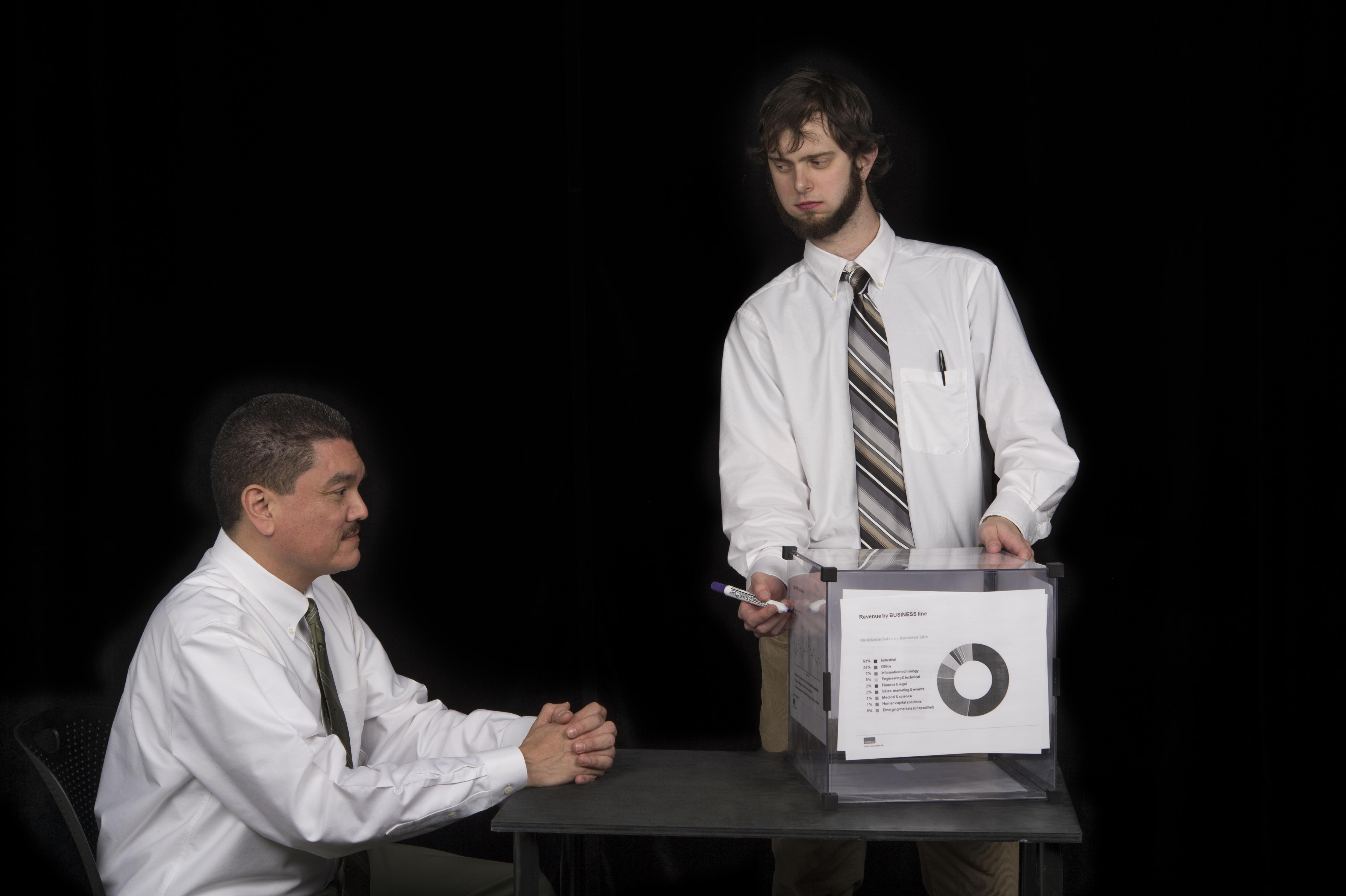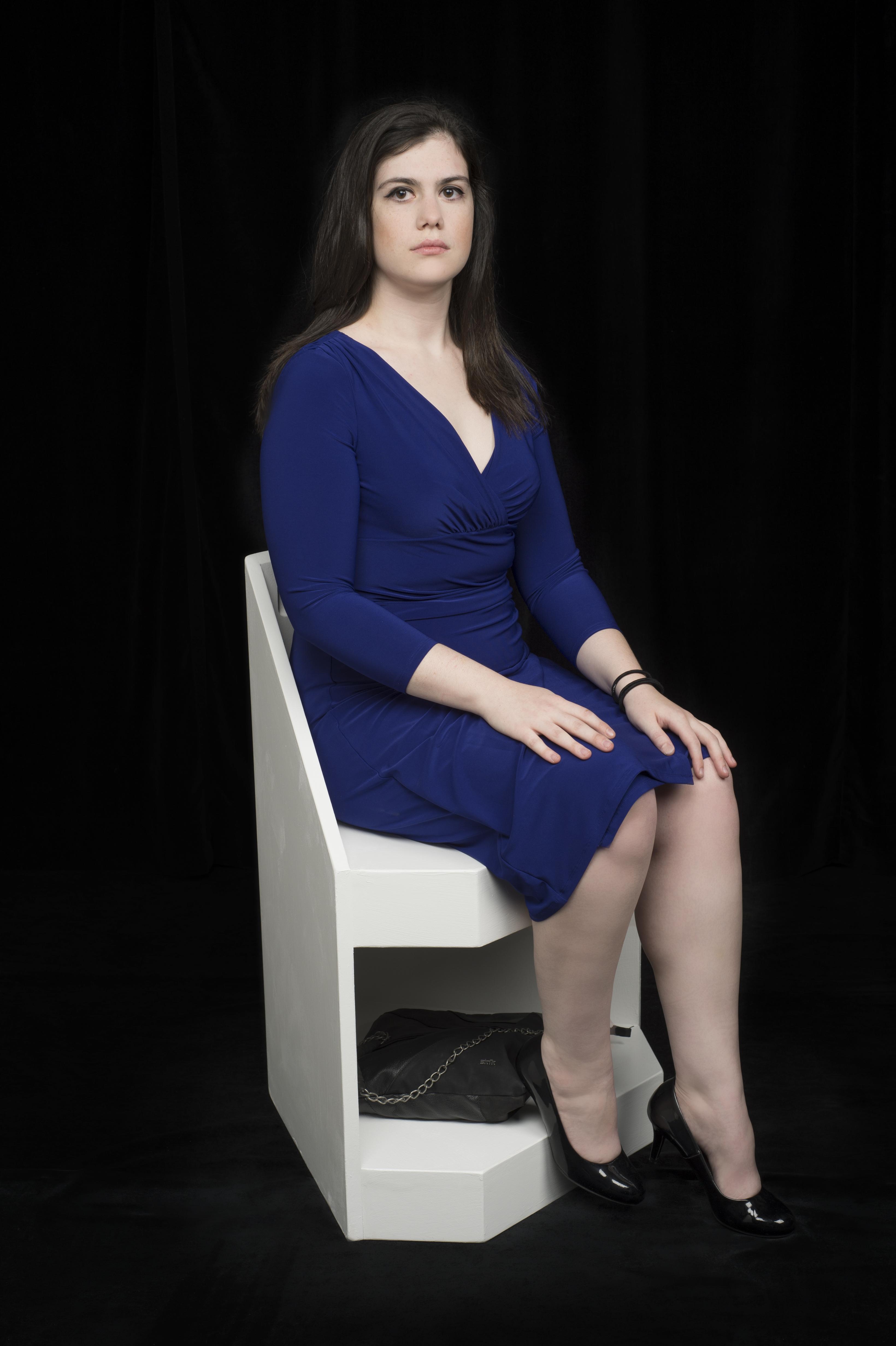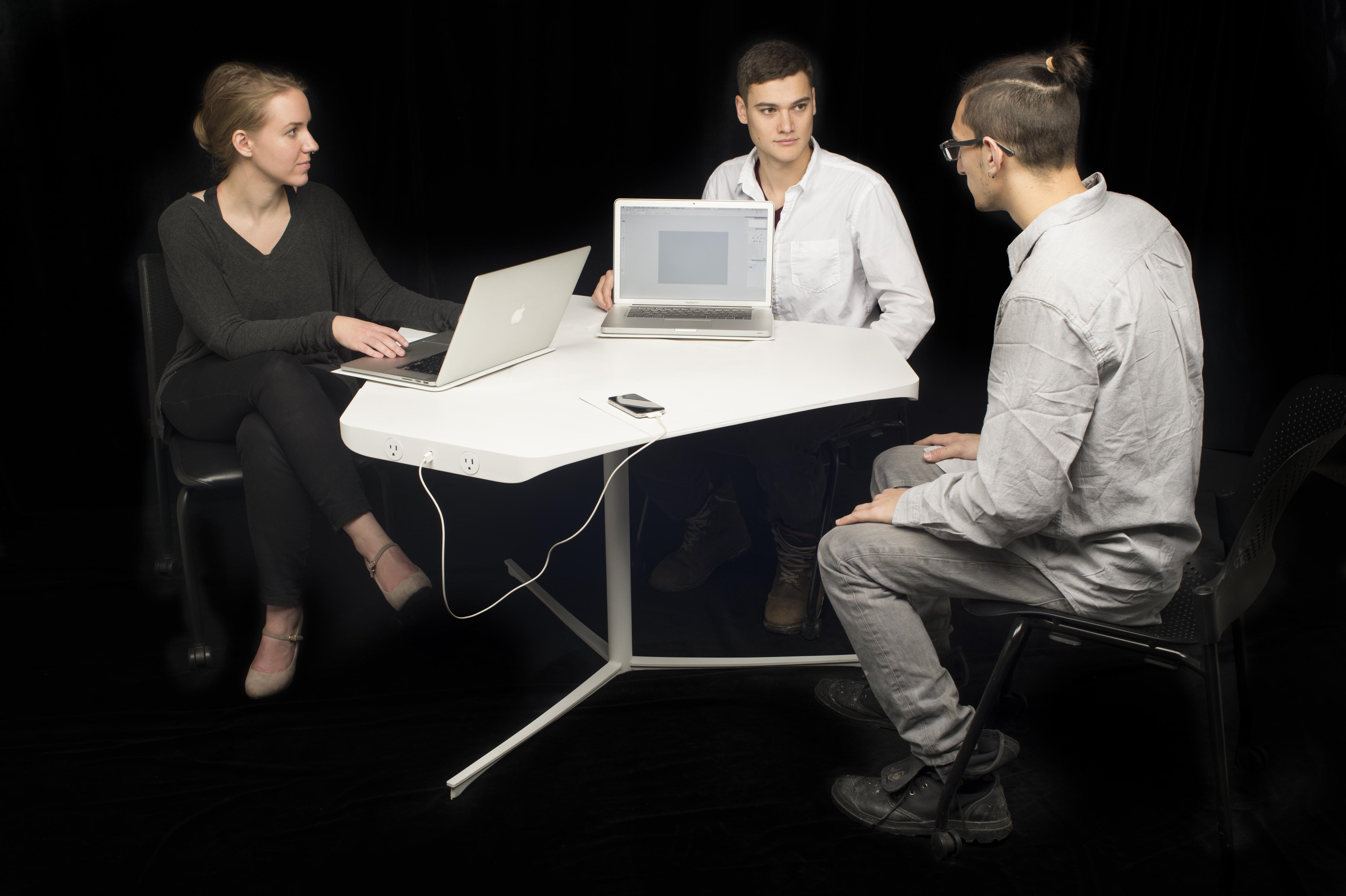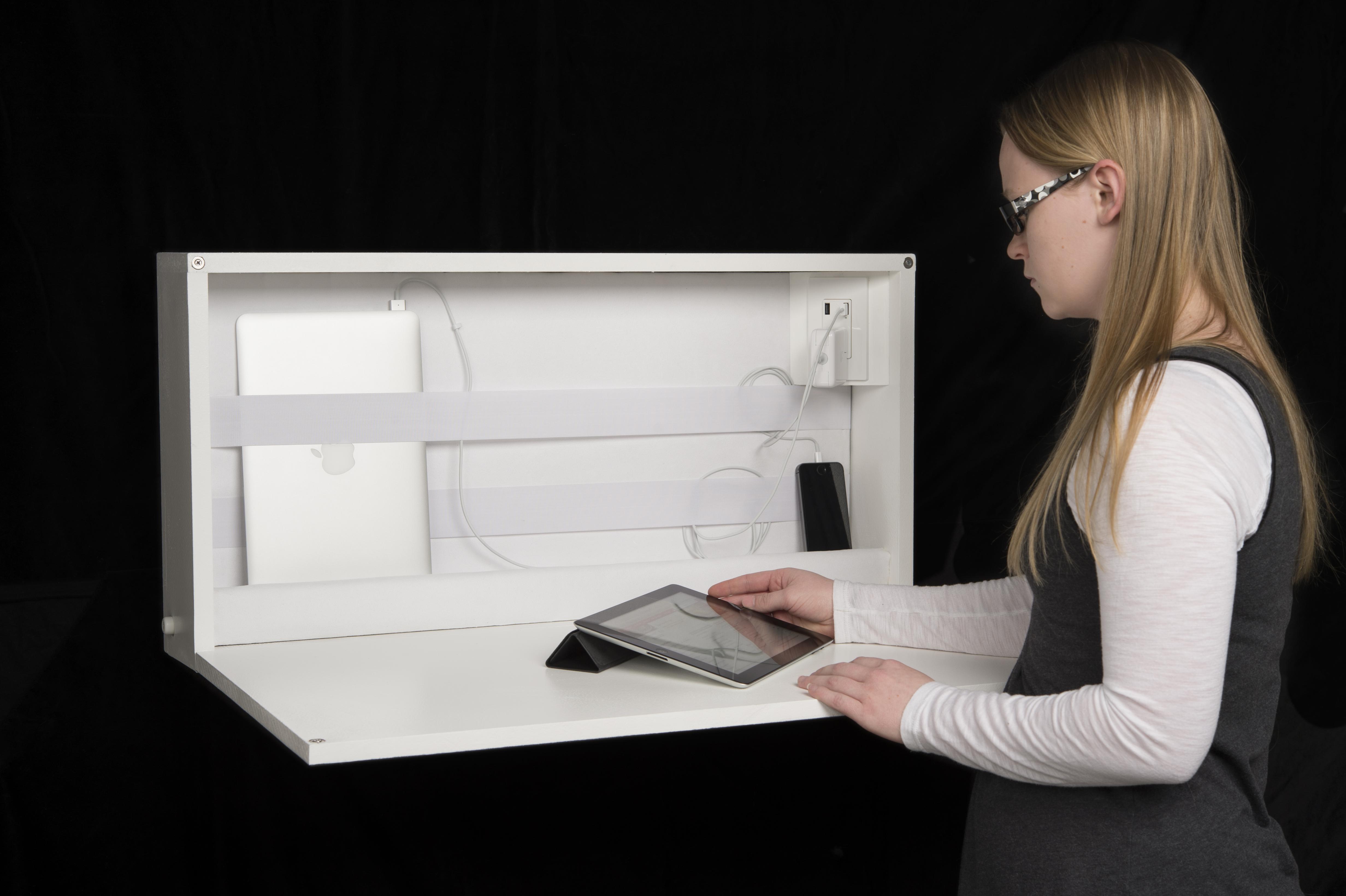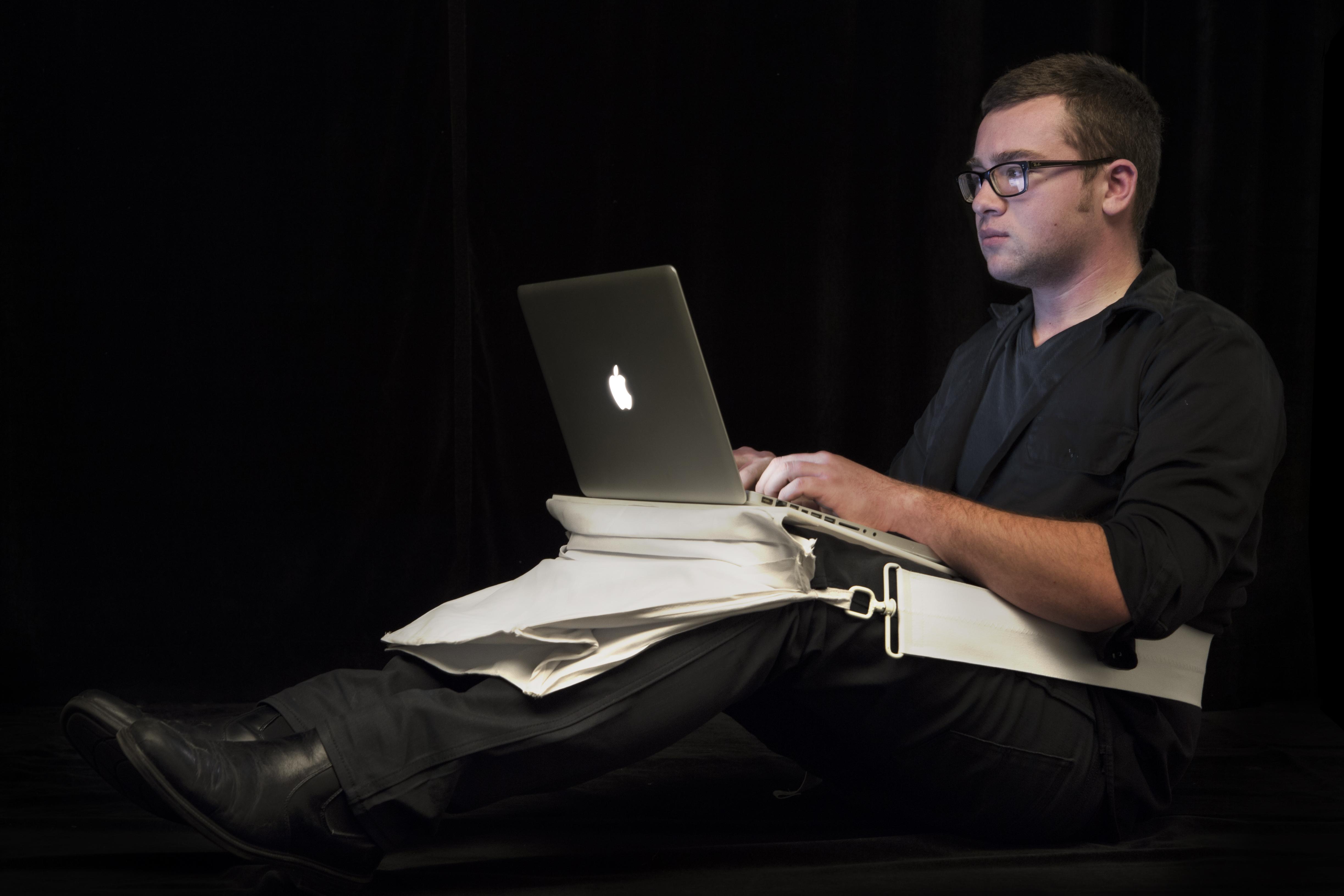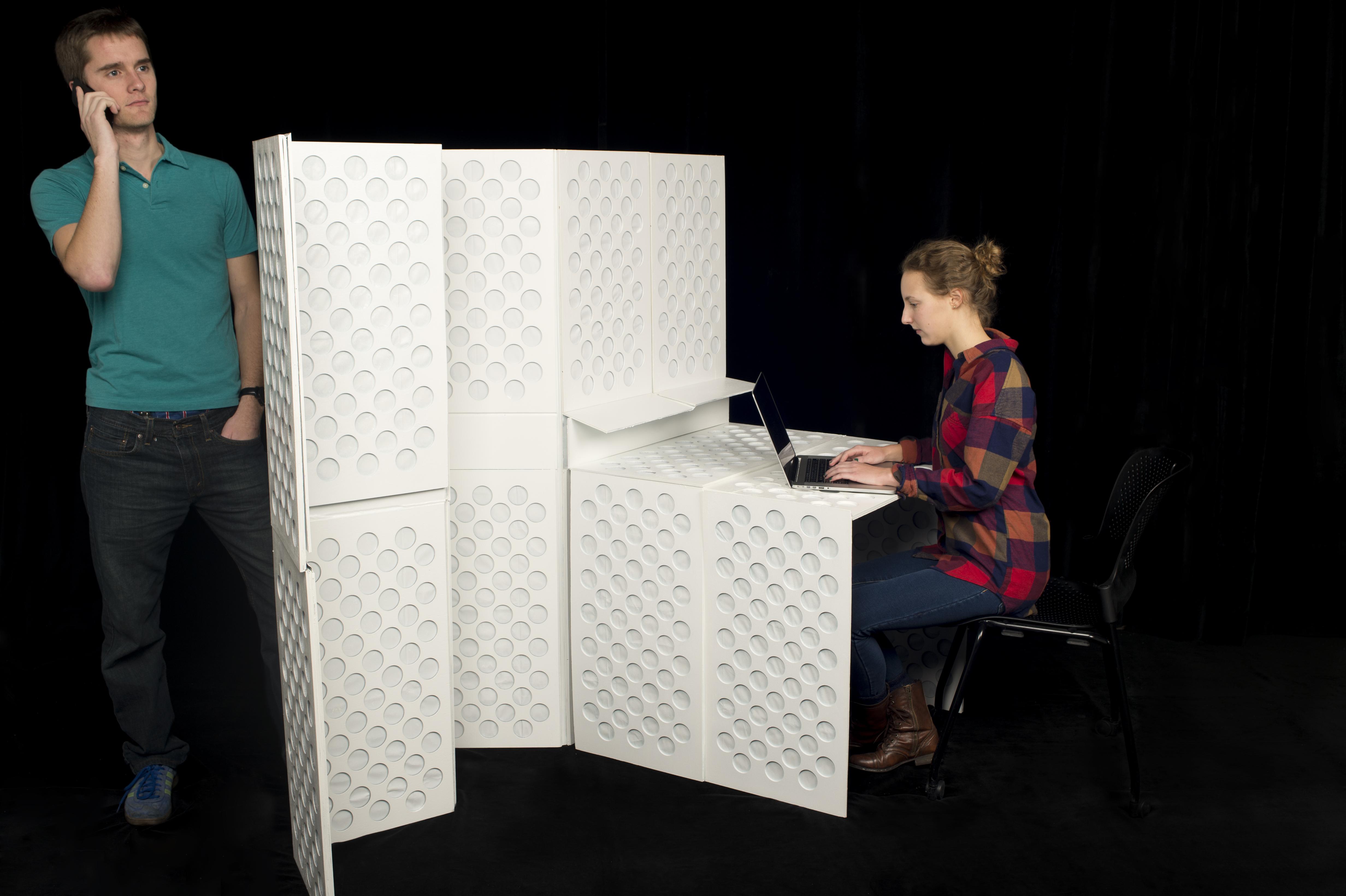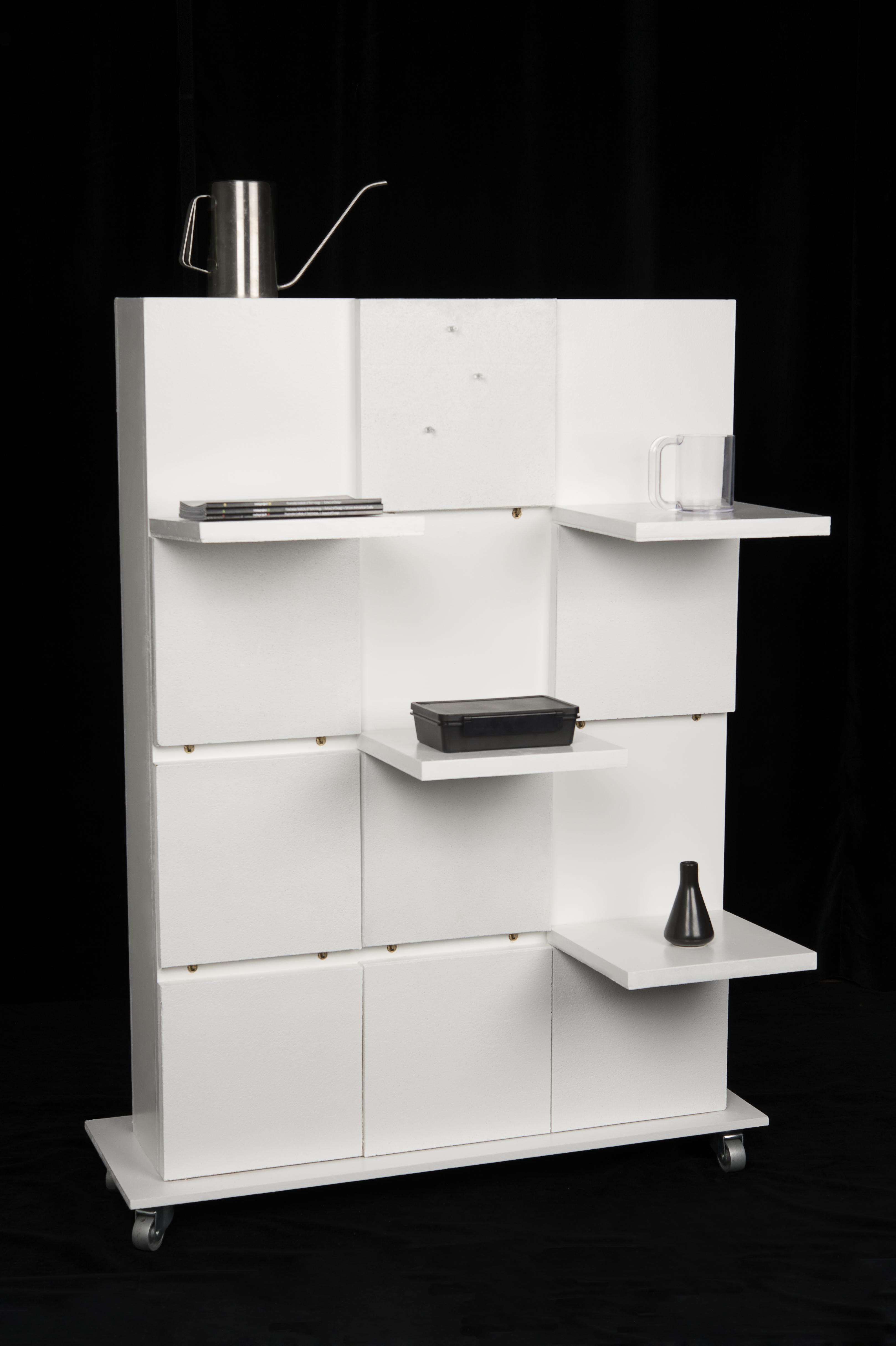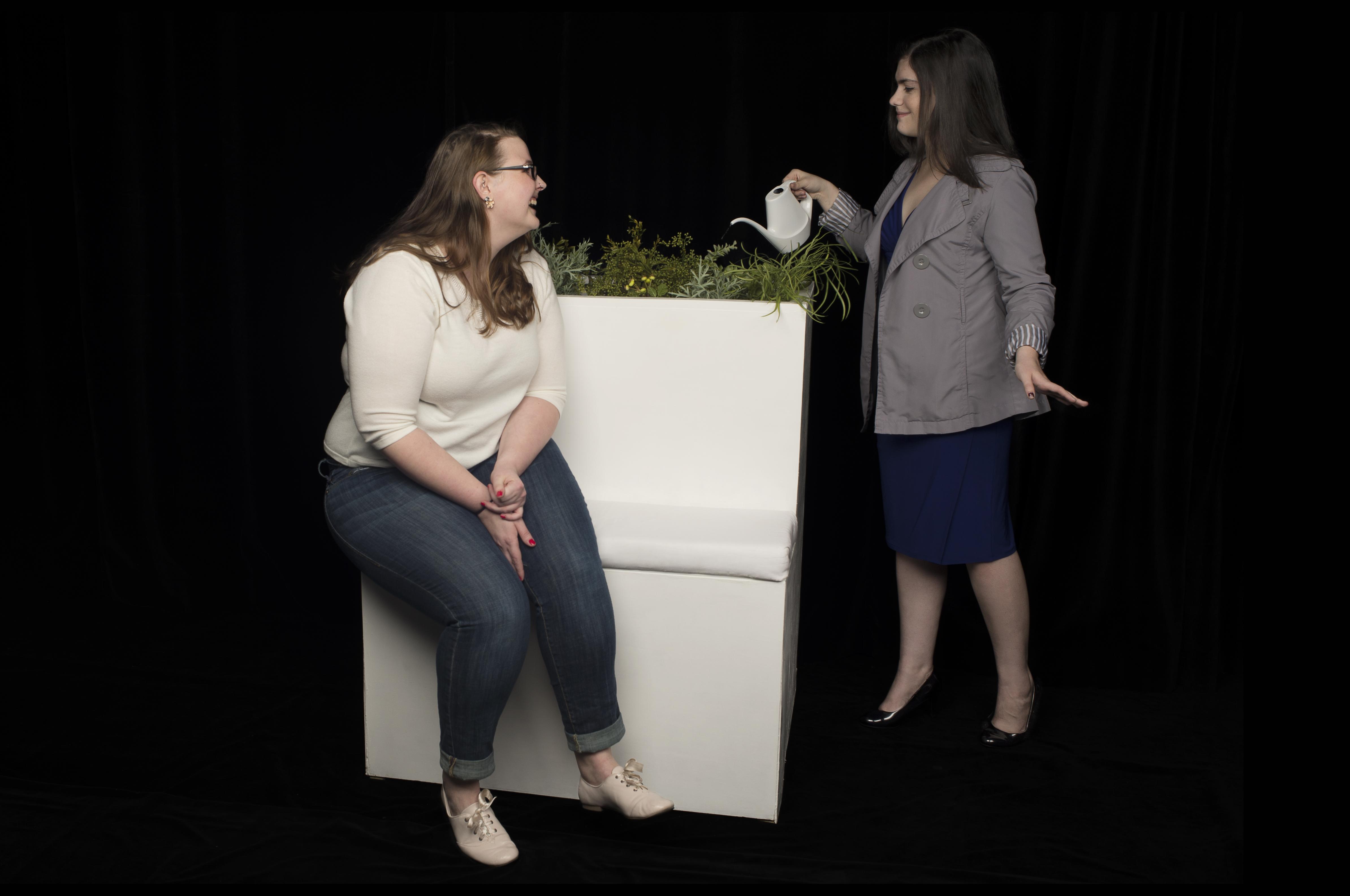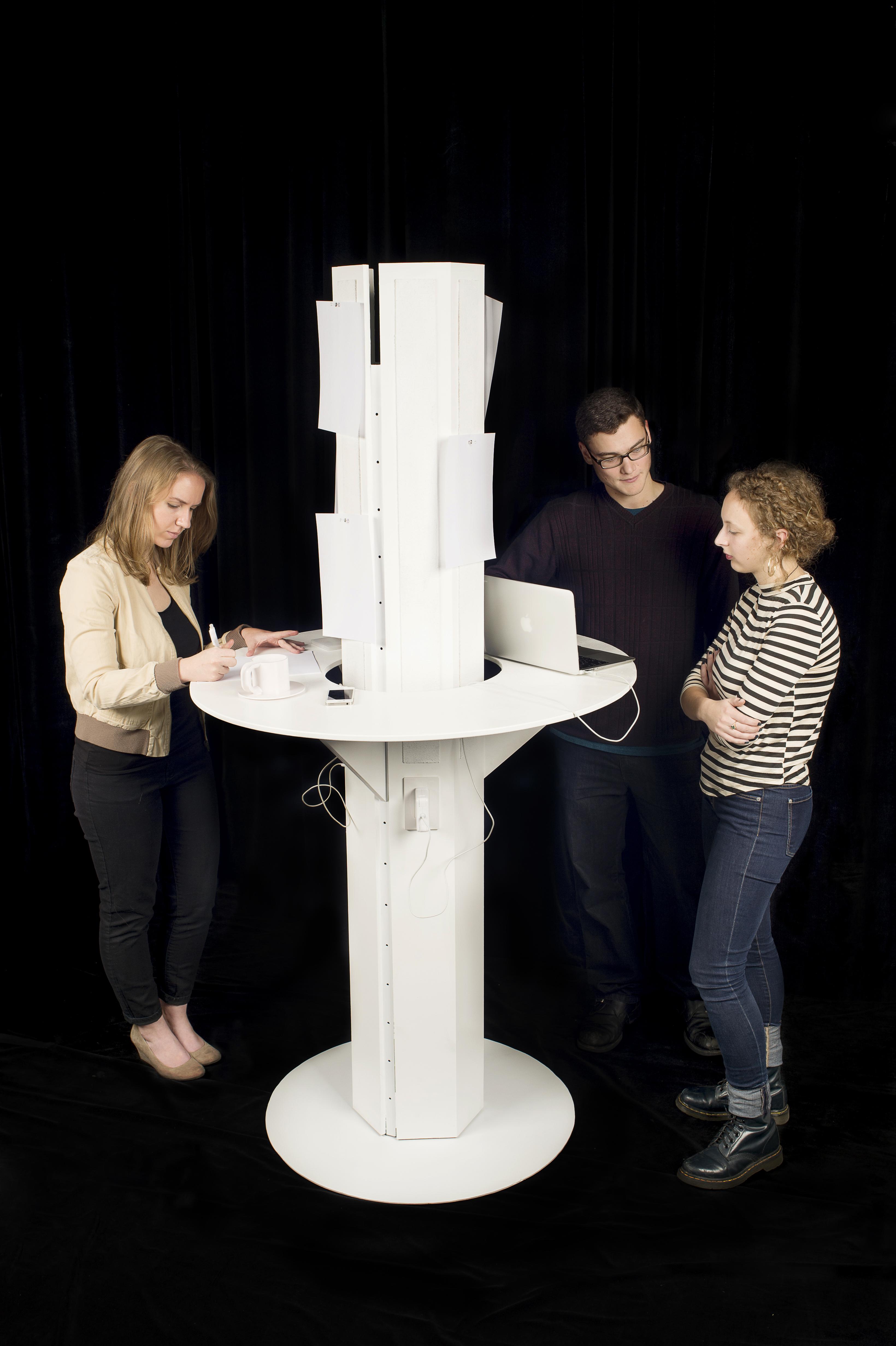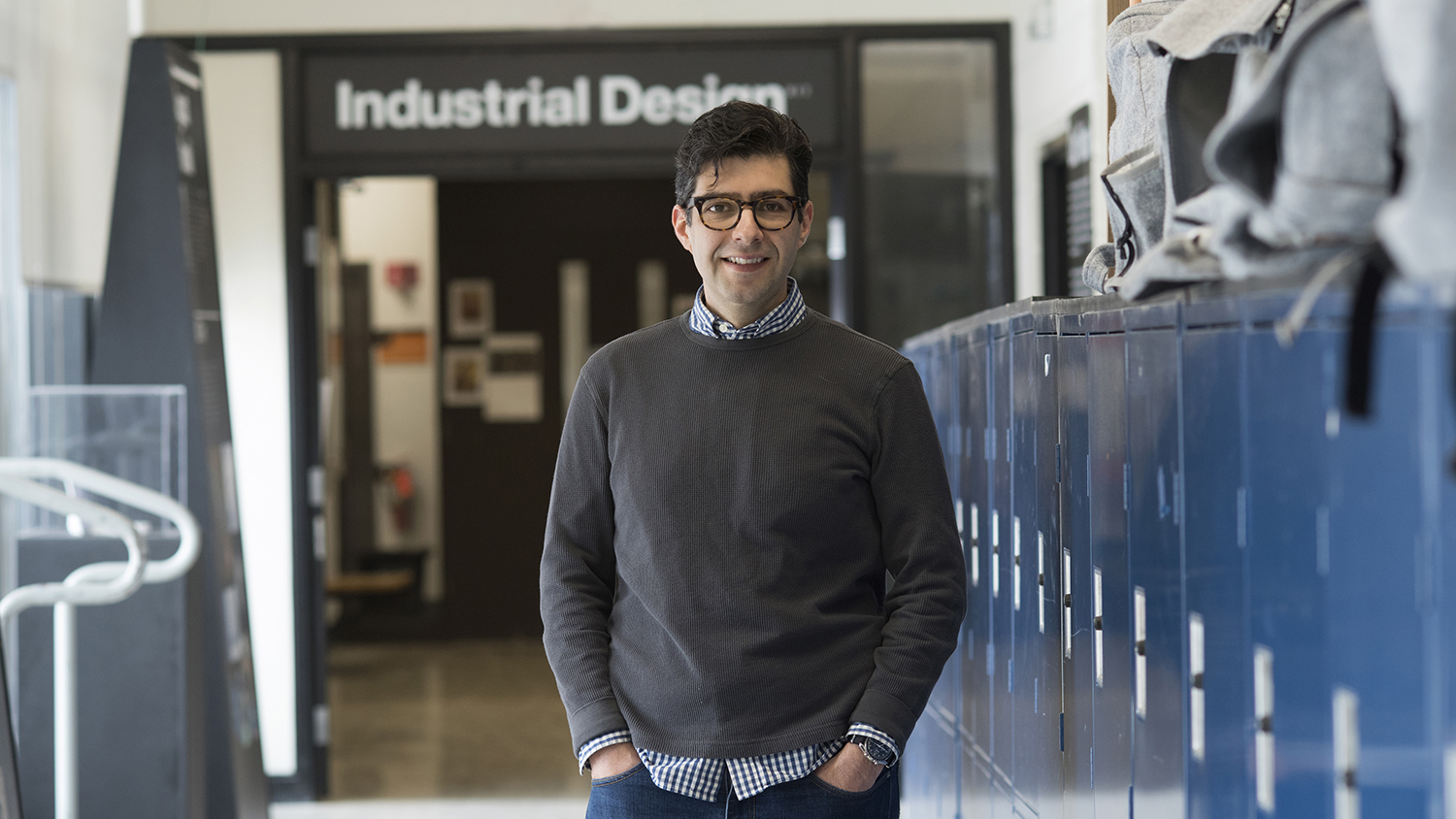2014 Metaproject 04, Herman Miller
Student designers, in partnership with award-winning, century old furniture manufacturer, Herman Miller, addressed the factors and challenges associated with building and enhancing relationships in the workplace, whether that be in-person, digitally-mediated, or those that exist between people and their tools. Focusing primarily on the Living Office vision and Herman Miller’s recent history, students debated the evolution of work and the current definition of a “relationship”, and tested how furnishings and space empower and enable interactions that extend beyond a simple point of connection. Primary focus was placed on one of the three relationship archetypes listed below, however, solutions may crossover to provide value to any and all of the three: Face-to-Face, Digitally Mediated, Human-to-Tools.
Students each designed and produce a high-quality, finished functional prototypes from actual materials using available on and off-campus resources. They were expected to carefully archive their process and document their final product with design-control drawings, graphically compelling use-scenarios and the written word to convey their overall concept. Students were given the opportunity to art-direct the final documentation of their product using a professional product photographer to deliver press-quality communication materials. Final results were judged by a team of Herman Miller representatives. At the time of the final presentation, the jury eight of the projects to be further developed for presentation at the International Contemporary Furniture Fair (ICFF) in New York City in May 2014.
Alexander Bennett
Invitation Chair
Relationship Focus: Digitally Mediated
The office serves as a hub of interaction, much of it predicated on digitally mediated conversations. An object within that context should further encourage and enhance those interactions. The Invitation Chair allows for the creation of a temporary shared space to collaborate, by allowing a user to share their seat with someone. The chair facilitates short bursts of interaction between two people who must focus their attention upon a computer screen while seated. By making it easier for workers to collaborate including the computer as a ‘third entitiy’. The Invitation Chair promotes a stronger workplace camaraderie and encourages creative thinking.
Tony Han
Snack Station
Relationship Focus: Face-to-Face
From sharing food to sharing a conversation to sharing ideas, the innate sociability of communal eating facilitates collaboration and enhances relationships. In order to promote a healthy lifestyle for employees, grabbing some quick healthy snacks without disrupting a conversation fulfills that critical need in a working environment. The Snack Station does this by offering a series of surfaces to place a variety of communal snacks for employees to enjoy. The structure and surfaces encourage users to interact and connect around a central hub within the office.
Gino Santaguida
Discretion Barrier
Relationship Focus: Digitally Mediated
In today’s society people are relentlessly on the go, while remaining constantly connected to the world via their digital tools. A simple phone call often disrupts our productivity and transit. The Discretion Barrier provides privacy without total isolation, and acts as a physical division for spontaneous behaviors that require a layer of privacy, such as phone calls. The frame also acts as a coat rack, providing additional layers of privacy for the user.
Richard Luo
Social Furniture System
Relationship Focus: Face-to-Face
Workspace stress can interfere with productivity and impact both physical and emotional health. Creating social space for informal conversation and providing opportunities for social interaction among employees is a efficient way to release stress as well as enhance relationships with co-workers. This pie-shaped modular furniture concept is designed to empower and enable interactions in the office area while creating a sense of sharing. It has twelve pieces of identical sections that can be joined to create endless arrangements in a variety of shapes and functions as stools, side tables, footrests, or bookcases. They can be used as an intimate communication space, where employees could relax and share of information, encouraging creative thinking, as well as serving as an entertainment center to release workspace stress. The pie-shaped modular system is minimalist, with a clear and functional use of its essential form. The curved lip creates a minimal stacked system that prevents each piece from moving around when stacking on top of each other. It also forms a subtle edge, preventing things from rolling or sliding off from the storage space. Additionally, the curved lip leaves a finger space at the bottom edge for people lifting piece when needed.
Kat Given
Personal Space Bar
Relationship Focus: Human-to-Tools/Face-to-Face
The Personal Space Bar allows the user to sit in a variety of comfortable positions and choose between open and private environments. The object consists of two components which creates two spaces: a desk just above bar height for an open environment for face-to-face meetings, and a cushioned interior space which allows a user to relax and retreat to a more private and isolated environment. The cushion is mobile, allowing for meetings with others outside of the desk space. It also functions a it also functions as a seat which fits into the interior space and allows the user to situp or recline comfortably while underneath the desk space. By giving a user a variety of ways to work within their space, the Personal Space Bar provides them with a few of the comforts of home, and allows them to change positions throughout the day so they do not become stiff and stagnant.
Emily Gammon
Task Stones
Relationship Focus: Human-to-Tools/Digitally Mediated
Focused work is best accomplished when stress is well managed. By using a system of physical objects which directly correlate to a person’s capacity for work, individuals can minimize worry about taking on more than they can handle. Individually, a stone is an elegant representation of the task it marks; as a whole, the set serves as a visual reminder to the user, and those around them of, “what’s on your plate.” The Task Stones come in three sizes. The smallest stones are made to mark quick and easy tasks, the medium stones represent moderate tasks, and the largest stones represent the tasks of greatest importance. To further elevate the form of the Stones and clearly visualize their workload, users will be able to categorize their tasks using a computer interface and the use of LED lights.
Tal Rosenblum
Intelligent Workflow Journal
Relationship Focus: Digitally Mediated
The Intelligent Workflow Journal is intended to track what is being accomplished on the computer, visually reporting it to the user when requested. This empowers the worker to visually experience their thought process anytime during their work. At the end of the day, the user can request a visual-story of what they have done to use as their personal journal. The Intelligent Workflow Journal also ranks the worker providing a reflective feedback on how the user can improve their workflow. These rankings will be intelligent because they will be calculated from the workflow trends of the user.
Maritza Garcia
Mobile Divider
Relationship Focus: Human-to-Tools
Open offices that encourage collaboration and inspire creativity have become a common theme in modern office design and planning. Introverts and extroverts have different means of generating ideas; introverts psychic energy tends to expand through reflection and dwindle during interaction. Some of the greatest ideas come in a moment of reflection. However, in an environment that is designed for constant interaction it is sometimes difficult for a person to create their own space to retreat into. The Compact Mobile Divider allows a user to create a visual barrier, and gives them an opportunity for personal reflection. It can quickly and quietly deploy to create a temporary barrier, and can be used as a signaling device to inform others that you wish to be left alone. When closed, the Compact Mobile Divider is elegantly stored and is unobtrusive as a simple box.
Kyra Wilson-Houck
Lecturn
Relationship Focus: Human-to-Tools/Face-to-Face
The Lectern stands between the presenter and the audience. It can be a barrier, a comfort object, a status symbol or merely a place to store electronics. It is a tool that enhances the relationship between the audience and presenter but is often overlooked. This lecturn focuses on the hierarchy of the room and embraces it through materiality and form exploration. This lecturn encourages the presenter to move around, keeping the audience involved while relaxing the presenter. As an object designed specifically for Herman Miller in mind, the fiberglass shell pays homage to the material language explored by Ray and Charles Eames.
Stephanie Lawrence
Task-Track Desk
Relationship Focus: Human-to-Tools
The Task-Track desk allows its users to maintain a task focused workflow by reducing the lag time and distraction caused by shifting from one task to another, such as from reading a book to using a laptop to drawing on paper. The table is designed to accommodate the needs of a drafter working on large sheets of paper, with a need to refer to a computer. The swiveling shelf allows the laptop to rotate on a track around the desk as the user moves to draw and the cantilever provides clearance for working. The shelf’s ability to move allows the user to bring the laptop closer without walking around or reaching over the desk to view the screen. The table is also designed for a user needing to refer to multiple sources smoothly. A slot in the shelf for the laptop allows a book stand to slide in, allowing the user to swivel to and from a book, paper, or tablet. When not in use, it fits on a peg on the side of the table.
Ryan Fox
Cube Presentation Tool
Relationship Focus: Human-to-Tools
The Cube Presentation Tool provides a platform for communicating images and information in a clean, organized manner with the additional function of adding the ability to “overwrite” with dry erase markers. The positionability of the item also engages conversations mediated by webcams.
Ariel Christopher
Tessarae Chair
Relationship Focus: Human-to-Tools/Face-to-Face
Waiting is a universal activity, however the experience is often not seen as positive. The Tesserae Chair is not simply a chair, it is an improved experience. The geometric shape of the chair allows users to position their chairs in a variety of arrangements and customize their waiting experience. The chair has a compartment that allows for the temporary storage of personal belongings. From an office lobby to an airport terminal, the design of this chairs allows it to be used in a variety of contexts. Interior designers can arrange a waiting space by using the chair’s geometry and tessellate them into a fixed formation.This chair is designed so users are at the same seat height as wheelchairs, which encourages inclusivity within a group and is ideal for a healthcare waiting space.
Kyle Sheth
Swerve
Relationship Focus: Digitally Mediated
In today’s technology driven work force, a traditional work table is not sufficient for the collaboration that occupies our day to day lives. By adding components to increase the dynamism and enhance the ease of group work surrounding the laptop, the Swerve table has removed the frustration of physical space from the equation. When this aspect is removed, the ability to focus on the tasks at hand strengthens.
Edward Fry
Personal Work Surface
Relationship Focus: Human-to-Tools
The Personal Work Surface table enables a user to use and store their personal tools within their workspace efficiently and securely. The center surface is solid allowing the user to write and work on it efficiently; while the side surfaces are tambour sliding doors that give the user storage and extra surface area. The compartments feature power outlets and fit a variety of laptop sizes comforatably, with room to accommodate chargers. Storage can also be used for notebooks, textbooks, and office supplies.
Joe Colleran
Kitchen Wall Desk
Relationship Focus: Human-to-Tools
The kitchen is often the central hub of activity within a home. This Kitchen Wall Desk takes advantage of the kitchen’s role as headquarters within a domestic context by providing a space for users to multitask. It is mounted in such a way that, when open, the desk is at a standard bar height. As a compact, wall mounted desk, it eliminates the need for users to walk between rooms while completing certain tasks. When closed, it features a flat black chalkboard surface that can be written on in clean chalk markers. Within the structure there are a variety of compartments which hold everyday electronics, including cell phones, laptops, and tablets. By including a variety of power sources within the unit, users are able to charge and store their everyday objects in one convenient location.
Alex Romeo
Messenger Desk Seat
Relationship Focus: Human-to-Tools
The Messenger Desk Seat redefines what tools are necessary in order to work outside of a typical office. It redefines what a chair and desk are in aesthetic, but maintains their function. The Messenger Desk Seat creates a proper workstation complete with flat work surface, seating, and storage for tools in one compact and mobile product. Similar to the messenger bag, it allows the user easily transport their work, tools, and workstation in one product.
Killian Castner
Transforming Room Divider
Relationship Focus: Human-to-Tools/Face-to-Face
Working at home poses a variety of issues, including the constant starting and stopping of work, maintaining a sense of privacy, and keeping work files organized. The Transforming Room Divider addresses these problems with it’s multi-functional nature. As a traditional divider, it allows the user to isolate their space and create a quiet, private, and more comfortable environment in which to work, and serves as a signal to other people in the space that they are working. The divider was created to transform into a mobile desk along with varying degrees of built in boundaries giving the user the ability to set-up a workstation anywhere in their home. By allowing both sides of the divider to be transformed into a mobile desk, the Transforming Room Divider offers a larger workspace for a single user, the opportunity to collaborate with a second user, or allow both users the chance to use the divider simultaneously with a temporary divider between them.
Oscar Rodriguez
2D/3D Modular Display System
Relationship Focus: Human-to-Tools
On a daily basis we interact with horizontal and vertical display surfaces. However, most forms of display are designed for two-dimensional presentation or for the presentation of three-dimensional objects, but not both. The 2D/3D Modular Display System allows a user to manipulate surfaces in order to display a variety of both two- and three-dimensional objects. As a mobile unit it allows users to place the system in a variety of locations, including meeting rooms and lobbies.
Heather Allen
Plant Bench
Relationship Focus: Human-to-Tools
The Plant Bench allows workers to escape from their desks for short breaks to connect to nature by tending to plants. Procrastination can leave people feeling uninspired, unmotivated, or stagnant; my object brings an alternative focal-point to the office, allowing coworkers to participate in the care and maintenance of a community plant. Gardening and the presence of plants in office are both proven to be therapeutic; by offering the worker an opportunity to garden within the office, I am offering them a chance to have a mental break from their day and a chance to relieve stress. The Plant Bench is of an adequate size to accommodate a large variety of plants, allowing the consumer to customize.
Ramsey Haefner
Signpost Hub
Relationship Focus: Face-to-Face
The transitional moments that occur in an office can be some of the most important yet over-looked aspects of office relationships. The Signpost Hub influences the gravity or flow of movement through a work environment by creating a gathering space for people passing by. In gathering around a common messenging post, people will converse and bond through shared information of interests, forming a more empathetic work environment. As well as serving as a communication point, the space created should allow people to break from standard work patterns. The Signpost Hub can function in a variety of locations, adapt to different situations and allow users to alter it’s physical appearance through interaction.





